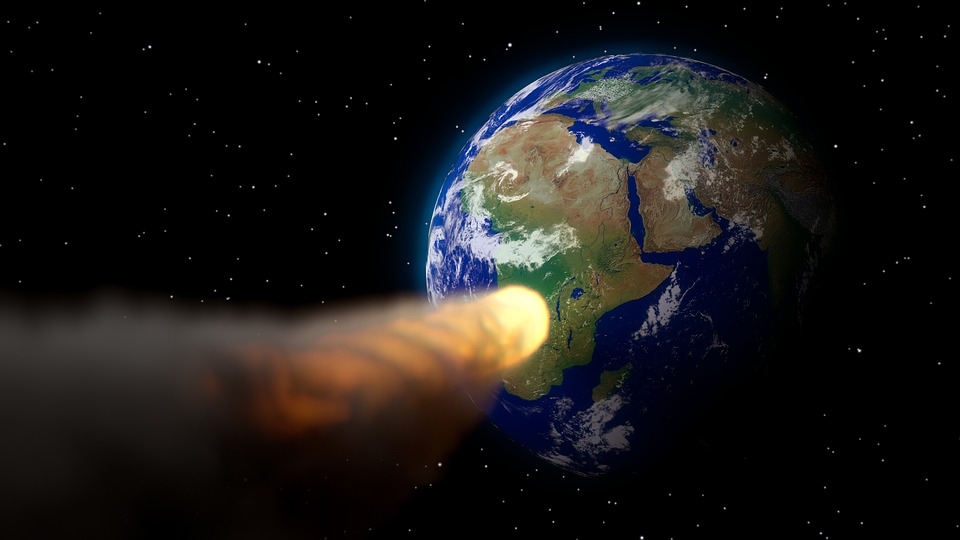Over the year, asteroids have come and gone, comets and meteor showers have also been passing by. However, there is still the possibility that an asteroid may make an uninvited visit to the planet, moving past the atmosphere and the consequences will be disastrous.
Meteorologists Dr. Simon King and Dr. Claire Nasir have described what would happen when an asteroid would hit Earth. There are usually a few possibilities when a space rock would approach the atmosphere. Small asteroids may burn up on entry due to the atmosphere, but the other kinds of asteroids, some still small but big enough to make it past the atmosphere or other giant rocks past the sizes of the world’s tallest structures, may be colliding into land or water. The scientists described that rocks measuring past one or two kilometers may bring on disastrous consequences that would affect the entire world, not just the place it landed.
They explained that shock waves and wind blasts may be brought on by the asteroid colliding. The air pressure could potentially do internal damage to bodies, and the strong winds are enough to hurl people into several directions, while leveling buildings and uprooting forests. The other catastrophic events that may occur from an asteroid collision are tsunamis, flying debris from the rock, annihilation, and strong seismic shaking or earthquakes.
On a more positive note, because asteroids have their own orbits to follow, their movements can be very predictable. This means that by the time asteroids might hit the Earth, we should be anticipating that to happen, and space agencies all over the world may have already prepared safety measures to make sure the planet dodges any asteroid collisions.
Many asteroids have been seen approaching the Earth’s vicinity, and a previous report reveals a good portion of those asteroids have impacts as huge as a nuclear bomb, mostly even more than the force of a nuclear bomb. According to the scientists behind World Asteroid Day, which occurs every 30th of June, there are about 21, 443 asteroids that have the nuclear bomb-like force if it ever makes a collision with the Earth.
This is just a portion of the millions of asteroids classified as Near Earth Objects or NEOs that can potentially do some damage on the Earth in case of an impact.



 Black hole, neutron star or something new? We discovered an object that defies explanation
Black hole, neutron star or something new? We discovered an object that defies explanation  Larger and more frequent solar storms will make for potential disruptions and spectacular auroras on Earth
Larger and more frequent solar storms will make for potential disruptions and spectacular auroras on Earth  Our survey of the sky is uncovering the secrets of how planets are born
Our survey of the sky is uncovering the secrets of how planets are born  If life exists on Jupiter’s moon Europa, scientists might soon be able to detect it
If life exists on Jupiter’s moon Europa, scientists might soon be able to detect it  Why is the universe ripping itself apart? A new study of exploding stars shows dark energy may be more complicated than we thought
Why is the universe ripping itself apart? A new study of exploding stars shows dark energy may be more complicated than we thought  Why some people don't trust science – and how to change their minds
Why some people don't trust science – and how to change their minds  Alpha, beta, theta: what are brain states and brain waves? And can we control them?
Alpha, beta, theta: what are brain states and brain waves? And can we control them?  Could a telescope ever see the beginning of time? An astronomer explains
Could a telescope ever see the beginning of time? An astronomer explains  Six space missions to look forward to in 2024
Six space missions to look forward to in 2024  Archeoastronomy uses the rare times and places of previous total solar eclipses to help us measure history
Archeoastronomy uses the rare times and places of previous total solar eclipses to help us measure history  Customizing mRNA is easy, and that's what makes it the next frontier for personalized medicine − a molecular biologist explains
Customizing mRNA is easy, and that's what makes it the next frontier for personalized medicine − a molecular biologist explains  Dark energy is one of the biggest puzzles in science and we're now a step closer to understanding it
Dark energy is one of the biggest puzzles in science and we're now a step closer to understanding it  The mystery of consciousness shows there may be a limit to what science alone can achieve
The mystery of consciousness shows there may be a limit to what science alone can achieve  The brightest object in the universe is a black hole that eats a star a day
The brightest object in the universe is a black hole that eats a star a day  Synthetic human embryos let researchers study early development while sidestepping ethical and logistical hurdles
Synthetic human embryos let researchers study early development while sidestepping ethical and logistical hurdles  The brain is the most complicated object in the universe. This is the story of scientists’ quest to decode it – and read people’s minds
The brain is the most complicated object in the universe. This is the story of scientists’ quest to decode it – and read people’s minds 































